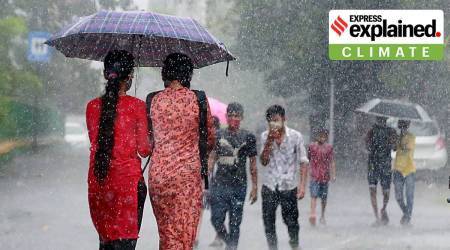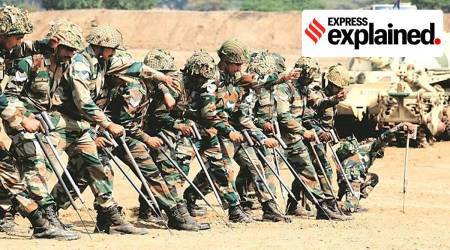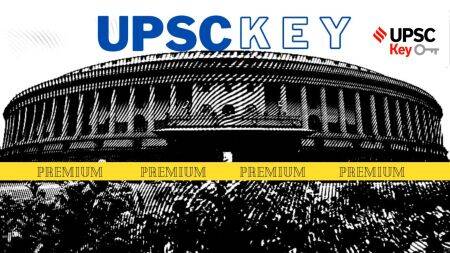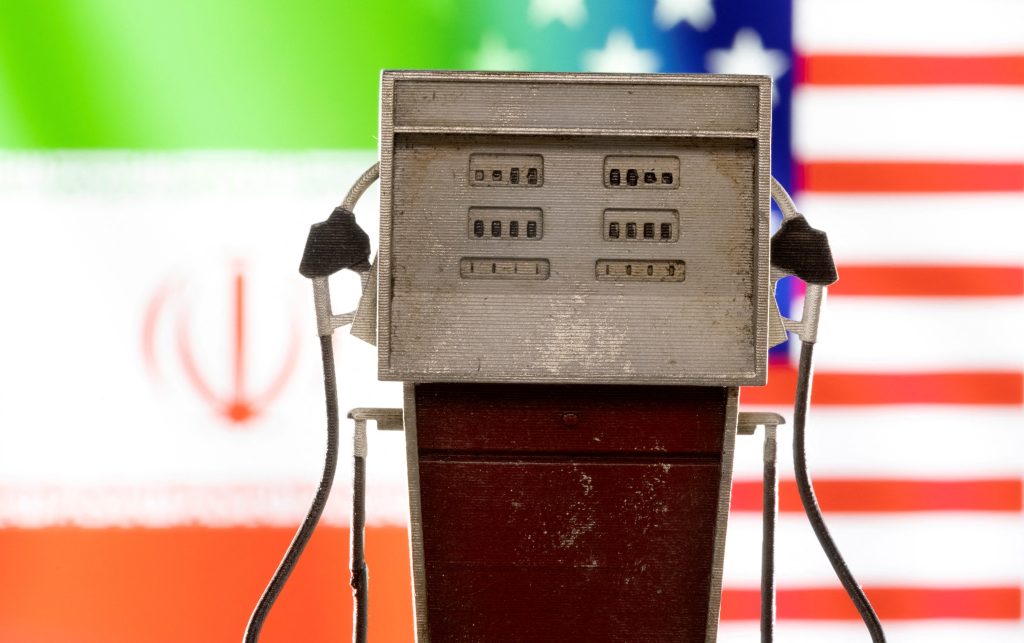Written by Alan Feuer
The January 6 committee’s hearing Thursday, which documented the relentless but unsuccessful campaign by President Donald Trump to pressure Vice President Mike Pence into helping him to reverse his defeat in the 2020 election, swerved wildly at times between wonky discussions of constitutional law and unsettling images of the threats and violence that Trump’s attacks on Pence inspired.
But at the heart of the committee’s presentation was a straightforward narrative.
Weeks before the mob attack on the Capitol, Trump joined forces with a law professor named John Eastman, who was espousing a theory that Pence, in his role as president of the Senate, had the power to alter the outcome of the election — or at least to delay certification of Trump’s defeat.
Best of Express Premium PremiumWhy experts say India does not need a population policy
PremiumWhy experts say India does not need a population policy PremiumMonsoon so far: heavy rainfall in parts of Northeast, hardly any elsewhere
PremiumMonsoon so far: heavy rainfall in parts of Northeast, hardly any elsewhere PremiumAgnipath scheme: Why age relaxation can also become a problem
PremiumAgnipath scheme: Why age relaxation can also become a problem PremiumUPSC Key-June 17, 2022: Know the relevance of ‘Chalukya style’ to ‘Black …More Premium Stories >>
PremiumUPSC Key-June 17, 2022: Know the relevance of ‘Chalukya style’ to ‘Black …More Premium Stories >>
Armed with this dubious legal cudgel, and with his other avenues for retaining power closing off, Trump pushed and pushed at Pence, including publicly on January 6, helping to rile up his supporters and trigger the riot at the Capitol.
Pence — backed by his own advisers and other legal experts — resisted Trump from the moment the idea came up.
Here are four takeaways from Thursday’s hearing.
Even Eastman doubted his plan’s legality, and he let Trump know that.
Trump went ahead with the pressure campaign on Pence even though Eastman, a former clerk to Justice Clarence Thomas and a law professor at Chapman University, was less than certain at times about the legality and political viability of his own plan.
The committee, for example, introduced an email that Eastman had written in the early stages of the scheme, in which he said that the idea of having lawmakers in pro-Trump states draft alternate slates of electors to give Pence a reason for disputing the results was “dead on arrival in Congress.”
Eastman also admitted in a private conversation with Pence’s top lawyer, Greg Jacob, that if the Supreme Court ever had to rule on the legality of a vice president deciding the results of an election on his own, the court would unanimously vote to toss the matter, Jacob testified.
But more important, Jacob told the committee in a videotaped deposition — snippets of which were played during the hearing — that Eastman had admitted in Trump’s presence that the plan to pressure Pence violated an 1887 law known as the Electoral Count Act. According to Jacob, Eastman acknowledged the illegality of the scheme in front of Trump on January 4, 2021, just two days before Pence was to oversee the certification of the election.
That crucial admission by Eastman was highlighted by Rep. Liz Cheney, R-Wyo., the committee’s vice chair, who has long suggested that Trump could be charged with a federal crime for the role he played in obstructing the certification of the vote count on January 6.
If prosecutors can prove that both Trump and Eastman were aware in advance that the scheme to pressure Pence would violate the law, it could be an important piece of evidence suggesting intent, should the Justice Department decide to pursue a criminal case against either of them.
Both Cheney and a colleague on the committee, Rep. Pete Aguilar, D-Calif., mentioned that a federal judge had already ruled in a related lawsuit that Trump and Eastman most likely conspired together to obstruct the certification of the election and to commit fraud against the United States.
In his ruling from March, Judge David O. Carter wrote that “the illegality of the plan was obvious,” calling it a “coup in search of a legal theory.”
Eastman was apparently sufficiently worried about being prosecuted for his role that he inquired a few days after January 6 about getting a pardon before Trump left office.
Pence never wavered on rebuffing Trump.
If there was one thing the committee’s hearing made clear, it was that Pence, despite his history of loyalty to Trump, never believed he had the power to decide the election — and almost no one else in Trump’s orbit did, either.
According to Jacob, Pence’s “first instinct” was to reject the notion out of hand, undercutting assertions by Trump’s allies at the time that he was open to the idea. Jacob told the committee that even during his first meeting with Pence about Eastman’s plan, the vice president was horrified, saying he did not believe that the founders who “abhorred concentrated power” would have ever agreed that one person — especially one who had an interest in the outcome — could have exercised sole discretion over an election.
Pence, it turned out, had wide support both inside and outside the White House. The committee, in its presentation, offered up a lengthy list of aides and advisers who seemed to disagree with Trump and Eastman.
In a recorded deposition, Marc Short, Pence’s chief of staff, said that Mark Meadows, Trump’s own chief of staff, agreed that the vice president did not have a broad or decisive role to play in determining election results.
Another top Trump aide, Jason Miller, in his own recorded deposition, told the committee that Pat Cipollone, Trump’s White House counsel, thought Eastman’s plan was “nutty.” He added that Sean Hannity, the very pro-Trump Fox News host, felt that Pence had done the “right thing” by rebuffing it.
Even Trump’s personal lawyer, Rudy Giuliani, seemed to doubt Eastman’s legal theory, according to Eric Herschmann, a former top White House lawyer. But, as Herschmann noted in a recorded deposition, that did not stop Giuliani from publicly promoting Eastman’s plan on January 6.
There was no legal underpinning to the Eastman plan.
At times, the hearing sounded not unlike like a law school seminar on election procedure, with highly technical discussions of how the vice president’s role on January 6 fit into the 12th Amendment and the Electoral Count Act.
Leading those discussions was J. Michael Luttig, a former federal appeals court judge, revered by conservatives. On the morning before the Capitol attack, Luttig posted a thread of messages on Twitter asserting that Pence had no power to use his own discretion in deciding the election.
“The only responsibility and power of the Vice President under the Constitution is to faithfully count the electoral college votes as they have been cast,” Luttig wrote.
He added: “The Constitution does not empower the vice president to alter in any way the votes that have been cast, either by rejecting certain of them or otherwise.”
In his testimony Thursday, Luttig denounced Eastman’s plan as “constitutional mischief,” adding that if Pence had gone along with it, it would have “plunged America into what I believe would have been tantamount to a revolution within a constitutional crisis in America.”
The pressure campaign helped trigger the violence.
Trump’s public calls for Pence to carry out Eastman’s plan raised expectations among his supporters that the vice president would do so — and ignited fury when he did not.
Short, Pence’s chief of staff, had grown sufficiently concerned about the potential for Trump supporters to turn against the vice president that he alerted the Secret Service on January 5.
Pence continued to rebuff Trump even after a call from the president on the morning of January 6 in which Trump called him a “wimp” and worse, according to testimony gathered by the committee.
At 2.24 pm on January 6, Trump sent out a tweet that said, “Mike Pence didn’t have the courage to do what should have been done.”
One Trump aide told the committee that it felt at the time like Trump was “pouring gasoline on the fire.” Immediately, the committee said, there was a noticeable surge in the crowds both inside and outside the Capitol, some of whom began to chant, “Hang Mike Pence!”
Pence was evacuated from his ceremonial office in the Senate and taken to a secure location, barely escaping the angry mob that breached the building. When Aguilar told Jacob, who had been with Pence in the Capitol that day, that members of the crowd had been only 40 feet from them, he seemed unnerved.
“I could hear the din of the rioters in the building while we moved,” Jacob said. “But I don’t think I was aware that they were as close as that.”
Express Subscription Check out the various Express subscription plans, now with Ad-lite Subscribe Now

